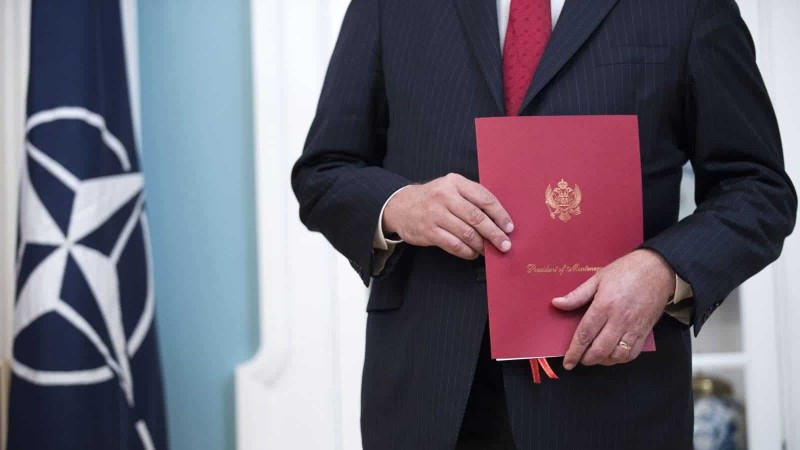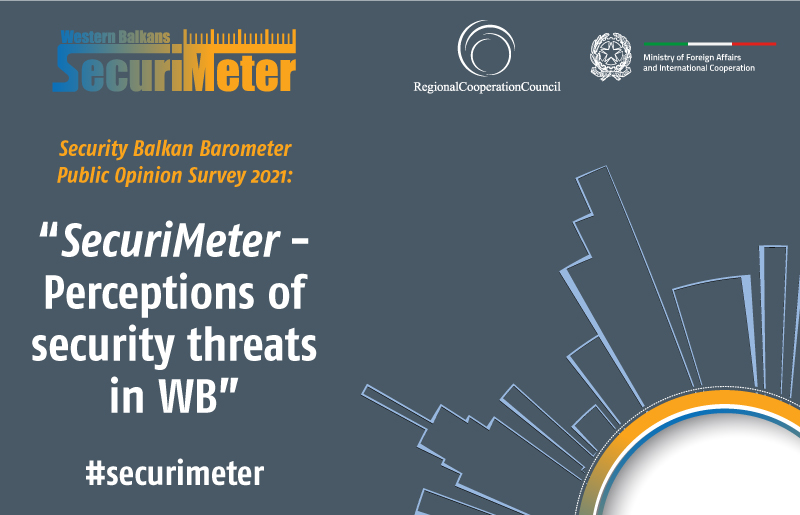- Home/
- News
BIRN Fact-check: Can Montenegro Withdraw from NATO?

Photo: US Under Secretary of State Thomas Shannon holds Montenegro's instrument of accession during an accession ceremony for Montenegro into the NATO alliance at the State Department in Washington, DC, USA. Credit: EPA/SHAWN THEW
During the parliamentary election campaign in Montenegro, the ruling Democratic Party of Socialists, DPS, accused the opposition of planning to pull Montenegro out of NATO, which it joined in 2017. It has repeated the claims since the election as well.
At a party gathering in the town of Tuzi on August 27, Prime Minister Dusko Markovic also accused the opposition of serving Russian interests.
“The opposition, which today appears in three blocs of the same address, does not recognize Montenegro, its institutions, or its international position. They start the campaign … submitting bills to others and not to their own country and people,” he said.
In the event, the three main opposition blocs won a slender victory at the August 30 elections, ousting President Milo Djukanovic’s DPS, in power for almost three decades.
On September 2, Djukanovic said Montenegro’s pro-Western future now faced an unprecedented challenge. In an interview for Newsmax Media, he accused the new parliamentary majority of planning to reverse history.
He had been personified, he said, “in the government that has been [in power] in Montenegro for years, a government which sees our country in the European Union and in the European and Euro-Atlantic system of values.
“As opposed to that, we have a very vivacious nationalism from the 1990s that has been awoken in new circumstances and now expects to reverse the wheel of history.”
Anti-NATO parties have no majority in parliament
Following the election, the three main opposition blocs now have 41 out of 81 seats in parliament. The four “Black on White” alliance MPs mainly represent liberal Montenegrin opposition voters, as does the “Peace is Our Nation” coalition, which has another 10 seats.
But the main “For the Future of Montenegro” alliance, which has 27 seats, is strongly pro-Serbian and pro-Russian. Its main constituent parties, Nova and the Democratic People’s Party, are strong opponents of NATO and cherish close relations with Moscow.
On September 1, however, one of the Democratic Front leaders, Milan Knezevic, said the new majority would have to respect the country’s existing international agreements despite their own programmes.
“It is clear that we as parties were against NATO membership, but the geopolitical and political reality is that with Montenegro’s membership in NATO, Montenegro’s withdrawal from NATO is impossible and we will respect that,” Knezevic told a press conference.
NATO membership was always hotly contested in Montenegro. Opposition and civic organization calls for a referendum on the matter were ignored. Instead, in April 2017, parliament voted in favour of membership.
Membership of the alliance was supported by the 46 MPs of the ruling coalition and opposition Social Democratic Party, while opposition Democratic Front MPs voted against that decision.
While the government called membership of the alliance a historic achievement for a country, the opposition pro-Serbian parties and the powerful Serbian Orthodox Church reviled NATO as the organisation that bombed the country in 1999, during the war over Kosovo.
A public opinion survey conducted by the Centre for Democracy and Human Rights, CEDEM, in August, suggested that 41 per cent of people in Montenegro were still against NATO membership, while only 38 per cent said it was good for the county.
According to an earlier CEDEM survey, from May 2018, the percentage of NATO supporters was then higher, at 45 per cent.
Decision cannot be undone until 2037
However, withdrawal is not dependent on polls but on a strict legal and political process.
According to the terms of the North Atlantic Treaty, Montenegro cannot withdraw from NATO before 2037.
The formal process is stated in Aarticle 13 of the treaty, which says: “After the Treaty has been in force for twenty years, any Party may cease to be a Party one year after its notice of denunciation has been given to the Government of the United States of America, which will inform the Governments of the other Parties”.
So, after a year’s waiting period, the country that wants to leave would then be out.
So far, not one member state has rescinded its membership, although the threat has been raised by a few countries.
In 1966, as relations between Washington and Paris soured because of France’s refusal to integrate its nuclear deterrent with other North Atlantic powers, or accept any collective form of control over its armed forces, French President Charles de Gaulle downgraded France‘s membership in NATO and withdrew France from the US-led military command to pursue an independent defence system. However, France did not leave NATO altogether.
Likewise, following the invasion of Cyprus by fellow NATO member Turkey in 1974, Greece withdrew from NATO military command. Like France, however, it did not withdraw entirely from the organisation.
A more recent question mark has arisen over Iceland. When Secretary-General Jens Stoltenberg visited Iceland last year, left-wing Prime Minister Katrín Jakobsdóttir spoke of her own support for withdrawing Iceland from NATO.
Her Left-Green Movement Party, the senior partner in the Icelandic government, also supports withdrawal. However, there is no majority in the country’s parliament for withdrawal, so the threat is not active for the moment.
Author: Samir Kajosevic
Source: Link


 Development of specialized PCVE web site is funded by EU FUNDS CN 2017-386/831 - "IPA II 2016 Regional Action on P/CVE in the Western Balkans"
Development of specialized PCVE web site is funded by EU FUNDS CN 2017-386/831 - "IPA II 2016 Regional Action on P/CVE in the Western Balkans"